I was awake bright and early this morning, literally,as the sun was bouncing off the lake and glaring into my windows. I hadn’t been disturbed by frogs and had slept well. At 0900 I left to head the 10km round the lake into Ohrid town. I had paid for my last night's stay with euros-but in Ohrid I got a few Macedonian Denars out of the cashpoint in quite comical circumstances.I parked up on the lakeside parade, and a parking attendant with a satchel came over and asked for a payment(actually about 20p )but this time wouldn't accept Euros. While he waited for me I headed up the street to a cashpoint and came back later with the equivalent of a £20 note ,for which he then had no change. Further sign language ensued and he next pointed me towards a couple of restaurants where he thought I could get change, but no-one there claimed to have any. He finally seized my note himself and headed off on his own quest, and finally re-appeared 10 minutes later to give me my ticket and my change.
Ohrid and its surrounding area is a Unesco world heritage site:it was a site of very early Slavic and Orthodox Christian scholarship that was flourishing in the 7th to 9th centuries. A university was founded by St Clement in the 9th century.(St Clement ,originally a disciple of St Cyril ,is credited with creating the Cyrillic alphabet here)
It is one of the earliest world sites to gain Unesco recognition and turned out to be a really interesting and attractive place. A sign on the way in stated in English “Ohrid,History-on–the-Water”,which sums it up well, because it is in a spectacularly beautiful setting on the lake shore, and as such is now a popular resort town also, which is heaving in the summer.Being Easter week ,it was fairly busy. But compared to Albania where everyone seemed to be engaged in the tasks of subsistence living,here were people indulging in what, to someone such as myself from the west, seemed the much more familiar activities of recreation, strolling for pleasure, jogging, and cycling in vivid lycra kit.
There were some really nice restaurants and cafes on the waterfront in which to relax .In terms of history, supposedly there were 360 churches here,”one for every day of the year” and most do remain still. Apparently only a few got turned into mosques during the Ottoman occupation.The oldest Slavic monastery in the world is here, St Panteleimon.Several of the churches have fantastic 12th-13th century orthodox frescos. I was given a very erudite and lengthy interpretation of the 13th century frescos in the church of St Mary the Virgin (Sveta Bogoricdica Perivlepta in Macedonian)by the curator who said she'd done her PhD on the subject. I learned about the importance of the cult of Mary in Orthodox Christianity, almost ,if not more ,important than Christ-i.e. there are holy books detailing the story of how she was resurrected after death etc, which were deemed blasphemy by other Christian sects-all new to me. I was just about able to follow this as the curator spoke in good but heavily accented English. Whether the two German girls who came in at the same time as me understood quite so much I don't know, but I think their English was much better than the couple on the campsite last night.
Opposite this church was the icon museum. Unesco deem the collection, which dates from the 11th to the 17th century, to be the second most important collection in the world, after the Tretiakov gallery in Moscow. Expecting orthodox icons to be small hand-led pieces, I was surprised to find that some of the exhibits were full size paintings, similar to renaissance religious art in,say ,Italy.
Ohrid and its surrounding area is a Unesco world heritage site:it was a site of very early Slavic and Orthodox Christian scholarship that was flourishing in the 7th to 9th centuries. A university was founded by St Clement in the 9th century.(St Clement ,originally a disciple of St Cyril ,is credited with creating the Cyrillic alphabet here)
It is one of the earliest world sites to gain Unesco recognition and turned out to be a really interesting and attractive place. A sign on the way in stated in English “Ohrid,History-on–the-Water”,which sums it up well, because it is in a spectacularly beautiful setting on the lake shore, and as such is now a popular resort town also, which is heaving in the summer.Being Easter week ,it was fairly busy. But compared to Albania where everyone seemed to be engaged in the tasks of subsistence living,here were people indulging in what, to someone such as myself from the west, seemed the much more familiar activities of recreation, strolling for pleasure, jogging, and cycling in vivid lycra kit.
There were some really nice restaurants and cafes on the waterfront in which to relax .In terms of history, supposedly there were 360 churches here,”one for every day of the year” and most do remain still. Apparently only a few got turned into mosques during the Ottoman occupation.The oldest Slavic monastery in the world is here, St Panteleimon.Several of the churches have fantastic 12th-13th century orthodox frescos. I was given a very erudite and lengthy interpretation of the 13th century frescos in the church of St Mary the Virgin (Sveta Bogoricdica Perivlepta in Macedonian)by the curator who said she'd done her PhD on the subject. I learned about the importance of the cult of Mary in Orthodox Christianity, almost ,if not more ,important than Christ-i.e. there are holy books detailing the story of how she was resurrected after death etc, which were deemed blasphemy by other Christian sects-all new to me. I was just about able to follow this as the curator spoke in good but heavily accented English. Whether the two German girls who came in at the same time as me understood quite so much I don't know, but I think their English was much better than the couple on the campsite last night.
Opposite this church was the icon museum. Unesco deem the collection, which dates from the 11th to the 17th century, to be the second most important collection in the world, after the Tretiakov gallery in Moscow. Expecting orthodox icons to be small hand-led pieces, I was surprised to find that some of the exhibits were full size paintings, similar to renaissance religious art in,say ,Italy.
I spent a good 3 hours wandering around the sites in the old town,a winding tract of lanes and alleys making its way up the hill to Car(Czar) Samuel’s castle, which I climbed the walls of. Below this was an old amphitheatre.On a couple of occasions I was stopped by people who wanted to guide me round some ancient sights for a small fee, introducing themselves as Professors of Archaeology. I thought it quite likely that they might indeed be as they claimed, rather than touts, bearing in mind the very knowledgeable tour of St Mary the Virgin I'd had earlier, but I declined their offers.
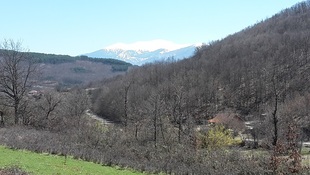 Mt Pelister
Mt Pelister I feel that one could easily spend a nice couple of days here, but I headed off on my way at around 1pm.The plan was to complete a little loop in Macedonia, before crossing the border into Greece-how far I would get I was not sure; certainly there are no recognised campsites or stops until you are deep in Greece.Next stop was the town of Bitola,which involved a climb up two little passes through oak woodland,with high snowy mountains above .The road was one of the worst I've come across ,with great waves in the surface the whole way, and frequent ruts and potholes to avoid.
I realised later that my friend and colleague Phil McCarthy was walking through here only about a month earlier on his amazing walk from Rome to Istambul( www.romealone.org.uk/2015-blog )
He had to turn back to Ohrid,while trying to walk across these hills ,as the snow became too deep and he had also encountered bear prints as big as his palm.
I realised later that my friend and colleague Phil McCarthy was walking through here only about a month earlier on his amazing walk from Rome to Istambul( www.romealone.org.uk/2015-blog )
He had to turn back to Ohrid,while trying to walk across these hills ,as the snow became too deep and he had also encountered bear prints as big as his palm.
Bitola is the kicking off point for the Pelister national park,a mountain region with a ski centre.It has Ottoman heritage but also a strange mix of nice tree-lined avenues but with the buildings other than the small historic centre being mostly large grubby communist era apartment blocks. I didn't stop, so it is quite possible that I missed the more interesting of the sights.
Just beyond Bitola, nearing the Greek border, I stopped for a late lunch in a roadside café. I reckoned I could then get on into Greece, and then just stop if somewhere attractive turned up to stay the night, or failing that head on the full 150 km to Vergina, where there was definitely a marked camper stop. I was the only person in the café and there wasn't an English menu.Without any difficulty I was able to order fried chicken and sauté potatoes ,with a shopska salad.This seems to be a favourite salad throughout the Balkans and I've had a few elsewhere already so was able to trip it off the tongue. Finely chopped tomato, cucumber, peppers and onions are served with a generous coating of a dry white grated cheese. Encouraging meat cleaver chopping noises, and then frying sounds issued from the kitchen. Together with a coke, the grand feast cost about £3.
At the border crossing at the village of Niki a few miles on,the Macedonians ,unlike the Albanians ,didn’t seem to take any exception to me staying just one night in their country and I was straight through. As soon as I was in Greece there was a marked improvement in the roads and after 10km I was barrelling along a nice dual carriageway at speeds I hadn't been able to manage since leaving Croatia so I knew I would be quickly in Vergina -the final 60km was accomplished by motorway.
Just beyond Bitola, nearing the Greek border, I stopped for a late lunch in a roadside café. I reckoned I could then get on into Greece, and then just stop if somewhere attractive turned up to stay the night, or failing that head on the full 150 km to Vergina, where there was definitely a marked camper stop. I was the only person in the café and there wasn't an English menu.Without any difficulty I was able to order fried chicken and sauté potatoes ,with a shopska salad.This seems to be a favourite salad throughout the Balkans and I've had a few elsewhere already so was able to trip it off the tongue. Finely chopped tomato, cucumber, peppers and onions are served with a generous coating of a dry white grated cheese. Encouraging meat cleaver chopping noises, and then frying sounds issued from the kitchen. Together with a coke, the grand feast cost about £3.
At the border crossing at the village of Niki a few miles on,the Macedonians ,unlike the Albanians ,didn’t seem to take any exception to me staying just one night in their country and I was straight through. As soon as I was in Greece there was a marked improvement in the roads and after 10km I was barrelling along a nice dual carriageway at speeds I hadn't been able to manage since leaving Croatia so I knew I would be quickly in Vergina -the final 60km was accomplished by motorway.
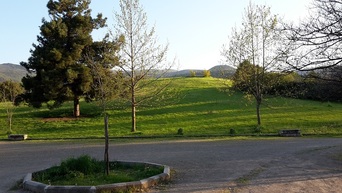 It doesn't look much, but this mound is the reinstatement of Phillip II's burial mound,now enclosing a subterranean museum full of amazing artifacts ,and the tombs preserved in situ.
It doesn't look much, but this mound is the reinstatement of Phillip II's burial mound,now enclosing a subterranean museum full of amazing artifacts ,and the tombs preserved in situ. Vergina(Ancient Greek ‘Aigai’) was the birthplace of Alexander the Great, and seemed a suitable place to visit just after leaving the country of Macedonia(I am now in the Greek state of Macedonia ;I am no expert on the ethnic politics which has meant Greece vetoing Macedonia’s entry to the EU-The Greeks insist the country of Macedonia be referred to as the Former Yugoslav Republic Of Macedonia, or FYROM for short)
It is thus another Unesco world heritage site.Excavations here in the 1970’s discovered the tombs of Phillip II,Alexander’s father,whose assassination in 336 BC propelled Alexander to the throne, and also the tomb of Alexander III,Alexander the Great’s and his wife Roxane’s 13 year old son,who later succeeded to the throne in his turn but was also murdered.A touring exhibition of some of the fantastic finds came to the Ashmolean museum in Oxford 2 or 3 years ago,which I saw ,so I was really excited to visit the actual site now. The tombs are intact, and have had an excellent museum built around and over them, finally the whole thing being enclosed in a reconstruction of the burial mound itself,creating a cool,dim-lighted space that sets off the brightly lit finds very well.No pictures were allowed inside (the ones below are library photos)but the finds are breathtaking .For example Phillip II’s complete set of ceremonial armour is on display ,together with some stunning gold oak leaf and acorn head wreaths, large sets of silver dining vessels,and bronze and pottery ware.Look it up if you’re interested.Unfortunately ,the other side of the village,the site of the royal palace and the theatre where Philip was assassinated are shut for major restorations and won’t be open for a couple of years.
It is thus another Unesco world heritage site.Excavations here in the 1970’s discovered the tombs of Phillip II,Alexander’s father,whose assassination in 336 BC propelled Alexander to the throne, and also the tomb of Alexander III,Alexander the Great’s and his wife Roxane’s 13 year old son,who later succeeded to the throne in his turn but was also murdered.A touring exhibition of some of the fantastic finds came to the Ashmolean museum in Oxford 2 or 3 years ago,which I saw ,so I was really excited to visit the actual site now. The tombs are intact, and have had an excellent museum built around and over them, finally the whole thing being enclosed in a reconstruction of the burial mound itself,creating a cool,dim-lighted space that sets off the brightly lit finds very well.No pictures were allowed inside (the ones below are library photos)but the finds are breathtaking .For example Phillip II’s complete set of ceremonial armour is on display ,together with some stunning gold oak leaf and acorn head wreaths, large sets of silver dining vessels,and bronze and pottery ware.Look it up if you’re interested.Unfortunately ,the other side of the village,the site of the royal palace and the theatre where Philip was assassinated are shut for major restorations and won’t be open for a couple of years.
The village itself is a sleepy place but clearly has its busy moments as it has a lot of (empty )touristy restaurants. The village camper stop was a small car park separated on 3 sides from the vegetable patches and chicken sheds of some houses, by a small chain-link fence.A friendly girl who spoke English came out of one of the houses and requested payment of the 4 Euro fee. There was water available from a standpipe tap, and theoretically electricity, but the tatty old box fixed to the chain link fence by wire had no earth connection registering on my circuit tester so I left it well alone. In retrospect I might perhaps have been better off parking in the empty car park of the royal palace, where one campervan was already installed, and there was a pleasant country view.
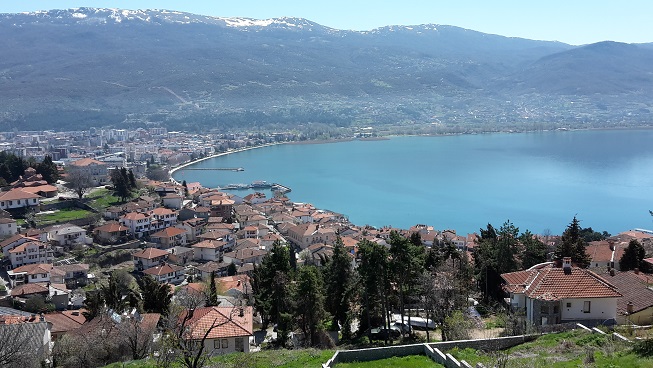
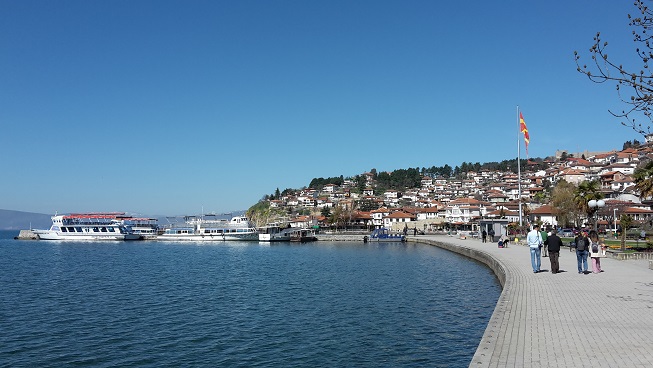
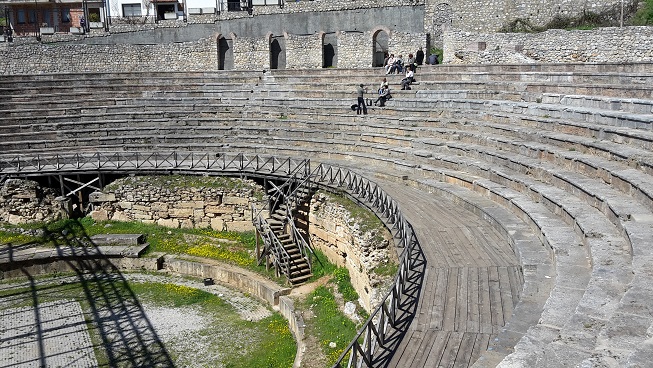
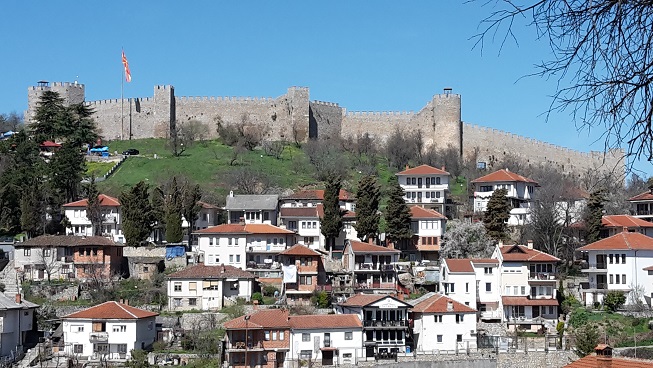
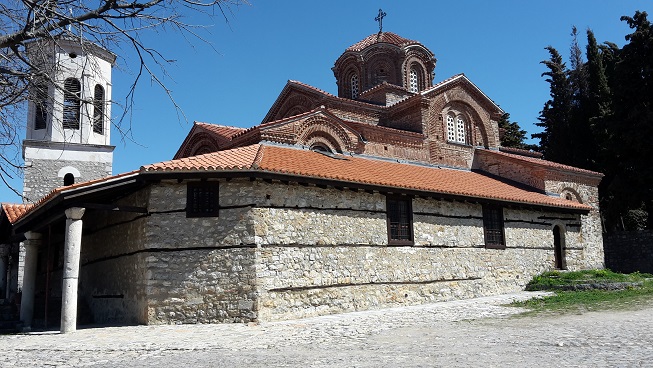
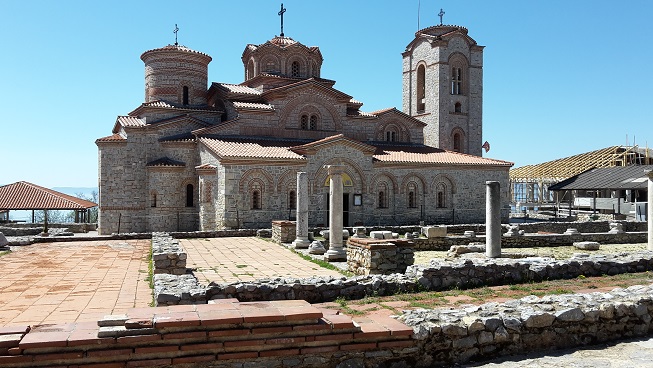
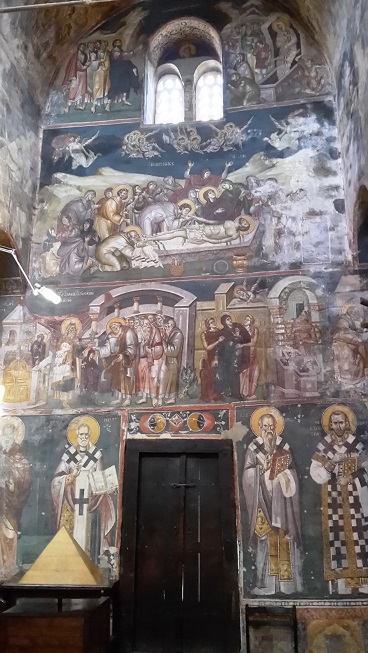

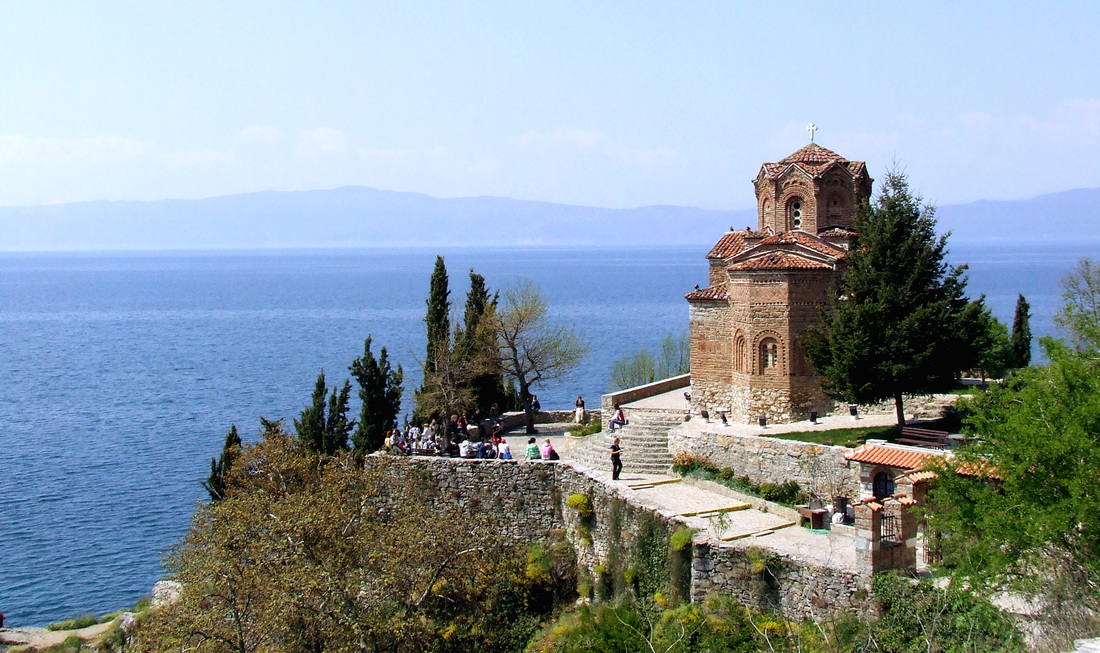
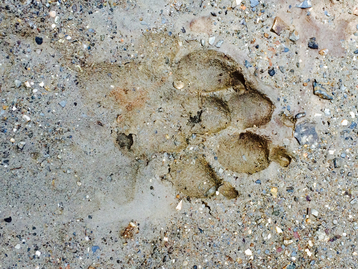
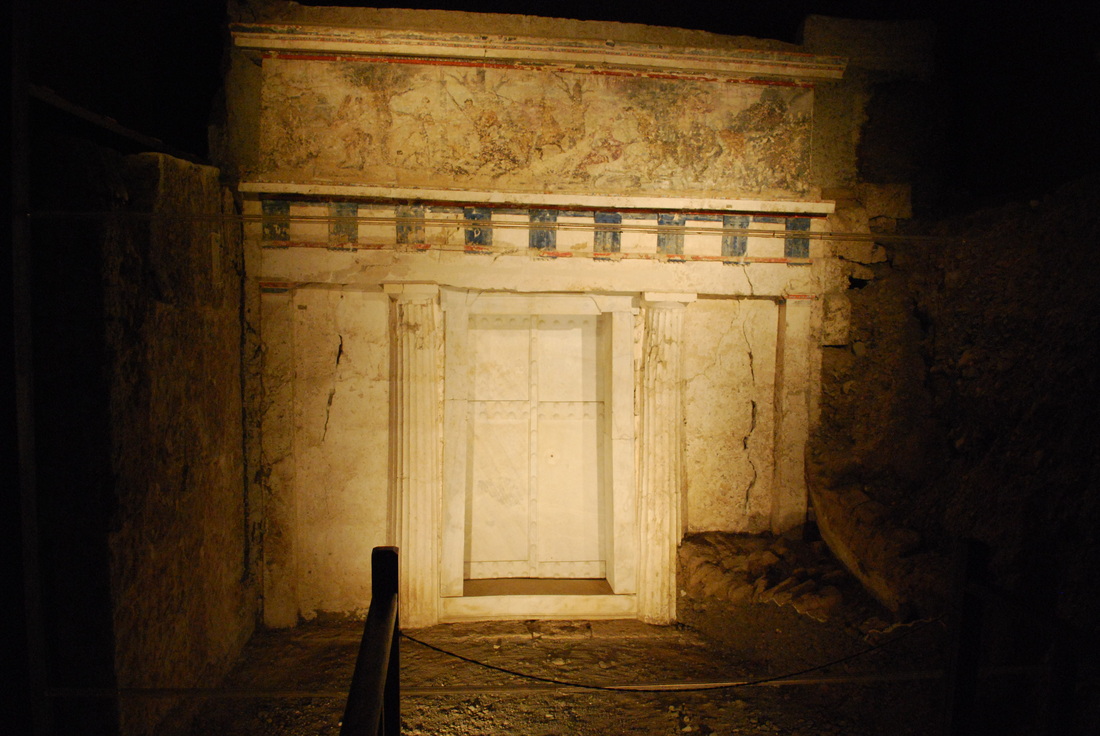
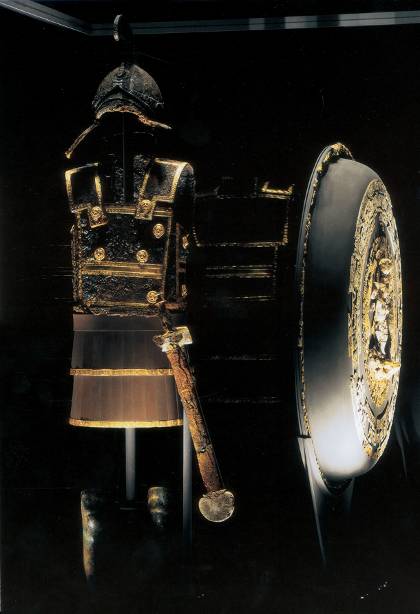
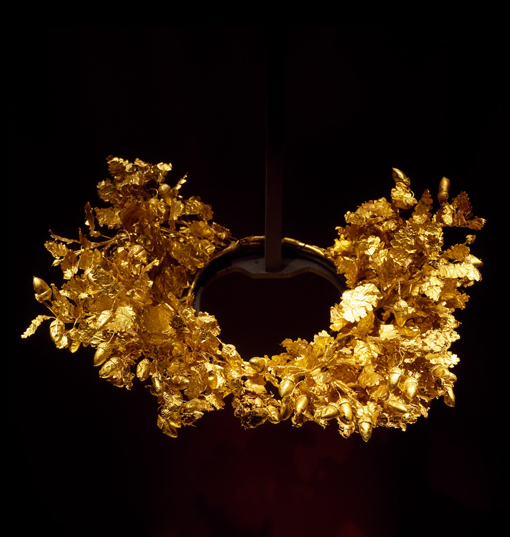
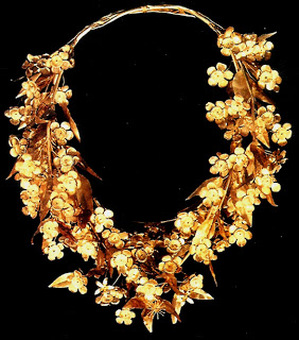
 RSS Feed
RSS Feed